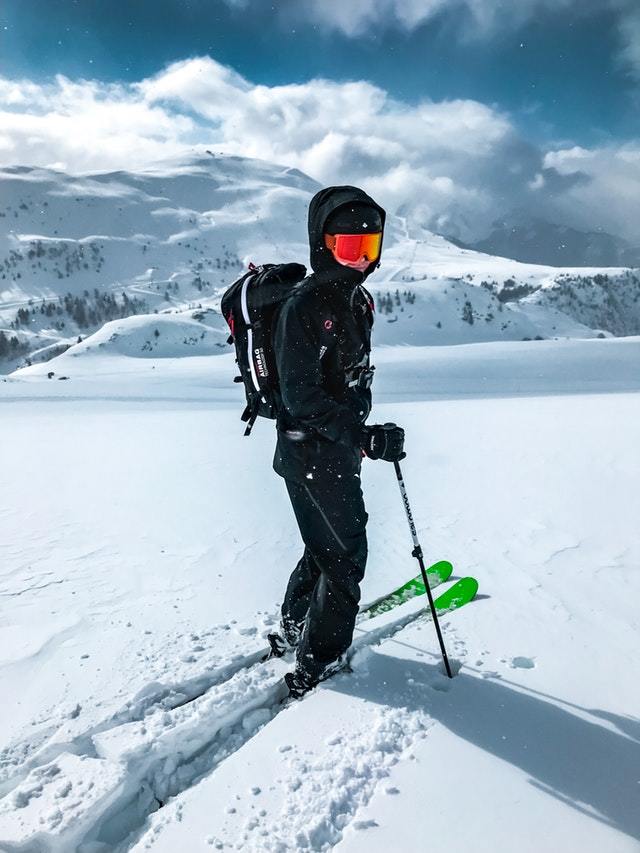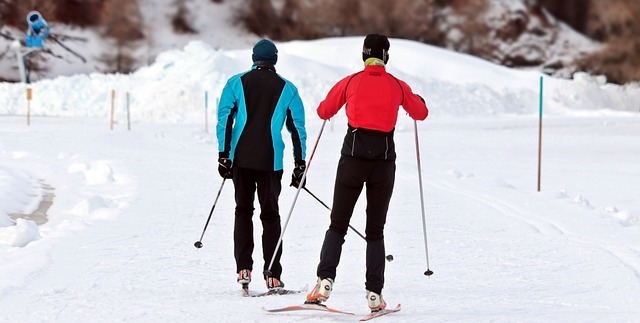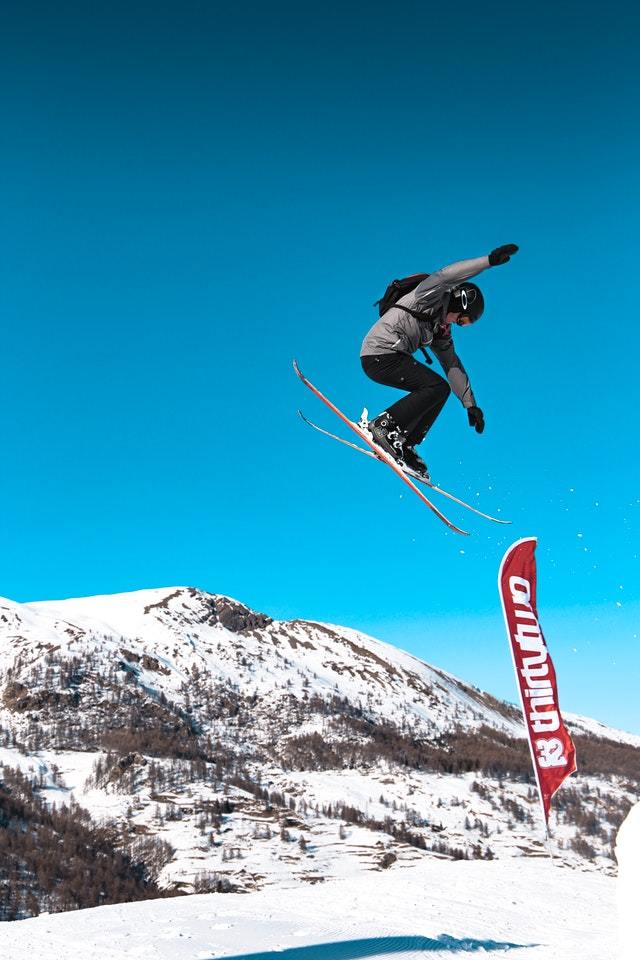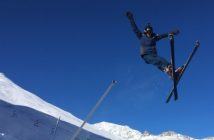Skiing is a great sport, no matter how often you get out to the slopes. However, despite all the precautions you may take, there are still numerous dangers involved on the mountain.
What happens if you get back from your vacation, and you notice that your thumb is hurting? Is this something that you can safely ignore, or is it a symptom of a more serious condition?
Skier’s thumb is the sixth most common injury that can occur on the slopes. It accounts for around 5% of all ski injuries, and there’s a good chance of returning home with pain in your thumb.
Of course, you don’t have to be a skier to get skier’s thumb, but skiers are the most common group of people affected by the injury.
Skier’s Thumb Defined
Skier’s thumb is more traditionally known as a UCL tear. UCL stands for ulnar collateral ligament. It is found on the second joint of the thumb, starting from the wrist.
Ligaments are strong, flexible, and fibrous connective tissues that link bones and cartilage. Their function is to stabilize the joint and keep the bones in their correct positions.
When a ligament is injured, we refer to this as a sprain. While sprains often go away with an ice pack, that isn’t always the case.
Degrees
Sprains can be categorized depending on the severity of the injury, from a Grade 1 sprain to a Grade 3 sprain.
- Grade 1: A mild injury. The ligament is stretched but not torn. You may feel a bit sore, and the affected area may swell to a slight degree. This type of sprain can be treated with some gentle stretching, and pain will go away with home remedies.
- Grade 2: Ligaments are partially torn, specifically a tear measuring less than 3mm. With this sprain degree, you will need to wear a splint or a cast for about 5 to 6 weeks. This degree can also cause bruising around the affected ligament, which is a symptom of bleeding under the skin.
- Grade 3: Ligaments with a tear greater than 3mm, or ligaments that are completely torn, fall under this category. In this case, a ligament may tear and remove a part of the bone with it; this type of injury is called an avulsion. Ligaments with a Grade 3 injury are unstable, and you will not be able to put weight on the joint. Grade 3 sprains usually require surgery and immobilization. If left untreated, it will cause chronic pain.

Causes
Skier’s thumb is often caused by skiing accidents. Breaking your fall with your hands may result in wrist sprains, but if you fall with a ski pole in your hand, you are more likely to tear the UCL.
Alternatively, skier’s thumb can also occur if your thumb hits packed snow after a fall. For this reason, snowboarders are also highly susceptible to skier’s thumb, because of the numerous falls they have to sustain.
Skier’s thumb can also be due to automobile crashes when the driver has their thumb draped over the steering wheel. On impact, the thumb is bent at an angle, causing a tear.
Other activities with repetitive movements that put force on the thumb can also cause skier’s thumb. Good examples include sports that require holding a ball, such as football, baseball, and basketball.
Gamekeeper’s Thumb
Skier’s thumb can also occur due to repeated motions involving the thumb. Actions that are repeated day to day can add up and injure a ligament.
When there is no ‘one incident’ that causes a tear of the UCL, we call this gamekeeper’s thumb.
How does it gain this name? The injury was first discovered among a group of gamekeepers, who had to break the necks of chickens over their thumb, leading to repetitive stress on the ligament.
Symptoms
The most common symptom of skier’s thumb is bruising, tenderness, and swelling around the base of your thumb. Other symptoms include:
- A weakened grip in the thumb and forefinger, if not a complete inability to grasp objects.
- Tenderness on the side of the thumb, nearest to the index finger.
- Worsened pain whenever the thumb is moved.
- A pain in the wrist, which may be caused by the pain in the thumb.

When to Call the Doctor
A ski thumb injury, like most sprains, is often no immediate cause for concern. Some rest and stretching are usually enough to heal a sprain. However, if a ligament tear remains untreated, it may lead to chronic pain.
So how do you know when to call the doctor? It’s best to wait a day or two to see if the pain in your joint goes away. If it doesn’t, then it’s wise to visit a doctor as soon as possible, so as to avoid further escalating the injury.
If your thumb feels loose and unstable, you may be suffering from a substantial or complete tear of the ligament. In these cases, contact your doctor immediately.
Diagnosis
When you visit the doctor, they will ask questions regarding the cause of your injury, such as: when it happened, the position your hand was in, when and how much the swelling took place, and how much your pain has affected your daily routine.
They may also ask about your medical history, such as previous surgeries on and near the affected area, your occupation (and whether it puts repetitive pressure on your thumb), and if you have allergies to pain medications.
Your doctor may then physically examine your thumb. They will move your thumb in different positions and will test the stability of the joint. With this examination, they can determine the severity of the tear and the types of appropriate treatments to recommend.
If your doctor suspects a tear, or a broken bone or fracture, they may order an x-ray of your thumb or hand. An x-ray will help determine whether or not you have an avulsion (a torn ligament that also torn part of the bone), a fractured bone, or a broken bone.
Your doctor may order an x-ray of both hands, so they can compare the bones of each. In some cases, your doctor may also order a particular type of x-ray, called a stress x-ray.
A stress x-ray is an examination that occurs while the affected body part is under stress. For example, in the case of skier’s thumb, you may have your thumb bent while being put under an x-ray. Of course, this may cause pain, and your doctor may prescribe pain medication for the test.
Stress x-rays are a great tool to determine the injury’s severity.
This video goes into more detail on skier’s thumb.
Treatment
If your doctor determines that you need medical treatment, you will be referred to an orthopedic hand surgeon.
You may not necessarily need surgery; while it is an option, you will most likely be treated with nonsurgical options.
Nonsurgical Options
Moderate sprains will need immobilization so that your ligament heals properly and safely. A brace is often used to immobilize the thumb in position while the ligament heals and reattaches to the joint.
The most common brace for the thumb is through bandaging, a cast, or thumb strapping. You may be instructed to wear your brace at all times, and you will be told not to put any pressure on your thumb until your injury heals.
You will need to wear the brace for four to six weeks. Depending on your daily activities, you may undergo hand therapy. Moving the thumb under the guidance of a physical therapist will speed up the healing process.
With a non-surgical treatment, you can expect to heal fully after about six weeks.
Surgical Options
In cases where the injury is severe, you may need to undergo surgery. Ligaments that are completely torn can only be repaired through this method.
Surgical treatments will address any broken bones, bone fractures, and avulsions, as well as restore the ligament, attaching it back to the joint.
A small incision will be made along the inner part of the thumb, and your surgeon will suture the ligament to itself or to the bone. If there are any fractures involved, permanent wires and screws will be used to address the injury.
After surgery, your surgeon may put you in a lightweight cast for about four weeks. This cast is meant to immobilize the joint so that it heals properly. If your injury also caused a fracture, you may be put in a modified cast.
After the four weeks, you may be fitted with a removable splint, so that you can begin physical therapy. You will be asked to refrain from putting stress on your thumb for three to four months after the surgery.

Home Treatments
If your doctor concludes that you don’t need medical treatments, skier’s thumb can easily be treated at home. When it comes to sprains, you can treat the injury using the RICE protocol.
- Rest: Do not use the thumb or put pressure on it for at least 48 hours after the injury.
- Ice: Apply ice over the site of the injury to prevent swelling. Cold packs should be used for no more than 35 minutes, with this process being repeated up to four times a day. Remember to not apply ice directly to the skin.
- Compression: An elastic compression bandage is an excellent way to reduce swelling temporarily. An ACE wrap or any other commercially available wrist brace can help immobilize the thumb.
- Elevation: Raising your hand higher than your heart can prevent bruising and swelling.
Additionally, pain medications can ease the discomfort of a sprain. Acetaminophen is an effective drug for pain relief, while ibuprofen can help with reducing inflammation.
If the pain does not subside after two days, make sure to see a doctor as soon as possible.
Preventing Skier’s Thumb
Ditch Your Poles During a Fall
Preventing skier’s thumb boils down to one thing: knowing how to hold ski poles. Because skier’s thumb is considered a ski pole injury, skiers should be taught to discard the ski pole during falls.
Falling on your outstretched hand can still cause skier’s thumb, but the lack of a pole dramatically reduces the chances.
Avoiding Slopes Beyond Your Skill Level
Additionally, beginners should also make sure that they aren’t on slopes that are too advanced for their skills. Challenging slopes significantly increase risks of all types of injuries and not just skier’s thumb.
If you try to tackle a slope that you aren’t ready for, you are putting yourself at risk, as well as other skiers.
Take Professional Lessons
For those who want to tackle more challenging slopes, take lessons from a qualified ski instructor to lessen your chances of injury.
These instructors will teach you how to limit falls and will train you to fall in a way that prevents injuries.
Learn to Roll
For those who do not want instruction and would prefer to remain on beginner’s slopes, it still pays to know how to fall correctly. When you fall, hold your hand in a fist and try to roll rather than plop onto the snow.
Rolling is a great way to distribute the impact to the rest of your body, rather than at just one point. Rolling will reduce the chances of sprains, as well as fractures and broken bones.
Use Ski Straps Correctly
Another way to prevent skier’s thumb is by knowing how to use ski straps. Ski straps often prevent you from letting go of the ski pole when falling.
If your ski poles come with ski straps, educate yourself on how to adjust them properly to prevent injury.
You can check with the manufacturer’s instructions for the pole strap placement and adjustment. You’ll know you’ve correctly adjusted the ski straps if your normal range of motion isn’t limited, and it does not cause fatigue.
Alternatively, you can choose a ski pole that has finger grooves instead of wrist straps. This will be easier to let go of during a fall.
Here’s a video explaining more about skier’s thumb.
Conclusion
Skiing is a great sport and an enjoyable hobby, but you should know how to protect yourself from skier’s thumb.
Proper techniques can ensure you return from your ski trip injury-free. Of course, if you feel like you have skier’s thumb, make sure to visit your doctor immediately.
Have you dealt with skier’s thumb? How do you cope?





